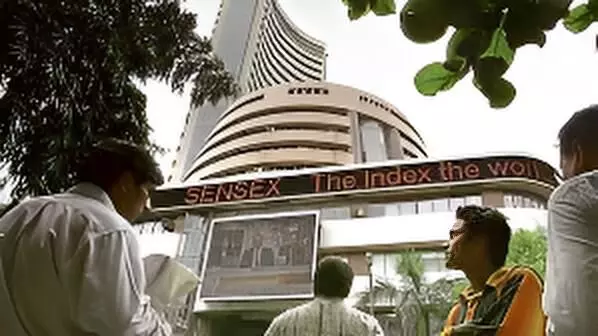Sensex Ends 800 Points Off Day’s High, Nifty Below 25,900: Four Key Reasons Behind Market Pullback
Sensex and Nifty erased strong early gains on October 23, 2025, as investors booked profits amid higher oil prices, weak global cues, and rising volatility. Here are four reasons behind the market decline.
Sensex Ends 800 Points Off Day’s High, Nifty Below 25,900: 4 Key Reasons for Market Fall

On the Indian stock exchange, most of the early profits were lost on Thursday as investors realized their profits at the higher price levels after a tumultuous trading day. The BSE Sensex and the NSE Nifty 50 could not maintain their peak levels and instead, ended up being under the pressure of the weight of mixed global cues and crude oil prices.
Market Summary
The BSE Sensex, after going up by as much as 863 points to reach an intraday high of 85,290.06, closed at 84,556.40, picking up 130 points (0.15%). The NSE Nifty 50 increased by 22.80 points (0.09%) to reach 25,891.40 at the end of the day.
The top-market-cap companies Eicher Motors, Bharti Airtel, UltraTech Cement, InterGlobe Aviation, and Eternal were the main losers and their shares were down by up to 3% intraday.
The Bank Nifty dropped more than 400 points and ended the day at 58,161 after reaching an all-time high of 58,577 earlier in the day.
Four Reasons Behind the Market Decline
1) Profit Booking at Record Highs
When new peaks were reached, investors quickly took their profits and a sharp intraday reversal followed. Analysts explained that traders were becoming more cautious due to increasing geopolitical tensions and the uncertain future of global trade talks.
“Domestic equities started strong but lost momentum as investors booked profits following sanctions on Russian oil and concerns over the postponement of India–US trade negotiations,” told Vinod Nair, Head of Research at Geojit Financial Services.
2) Rebound in Crude Oil Prices
Brent crude, the standard for global oil, went up by 2.56% to $64.19 per barrel, which set off fresh anxieties over inflation and fiscal stability. The increase came as the U. S. imposed sanctions on Russia's major oil companies, Rosneft and Lukoil, on account of the country’s involvement in the Ukraine conflict.
3) Weak Global Cues
Global markets were not helpful, with most Asian indices — Japan’s Nikkei 225, Shanghai Composite, and Hong Kong’s Hang Seng — trading in the red.
U. S. markets also fell overnight as mixed corporate earnings and uncertainty regarding trade policy made investors less confident, which in turn added to the fall in sentiment in domestic trade.
4) Spike in Volatility Index (India VIX)
The volatility index for India, which is a benchmark for measuring market volatility, increased by 3.3% to 11.73 during the trading session, suggesting a rise in the short-term uncertainty among the traders. A high VIX is usually perceived as a caution index for the stock market particularly after a strong rally.
Expert Take
As per Puneet Singhania, Director at Master Trust Group, the Nifty is still getting solid support around the range of 25,400–25,500.
“This zone still stands as a robust foundation for the sustained upward trend accompanied by positive domestic mood and healthy fund inflows,” he commented.
In the view of the analysts, the trend in the coming days is expected to remain sluggish and profits may be booked at higher levels in light of the prevailing geopolitical uncertainty and high commodity prices.

